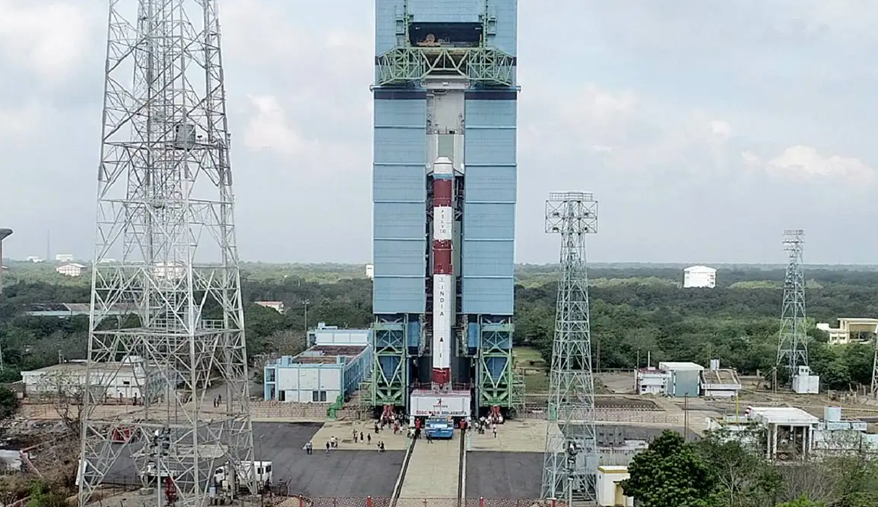Highlights
- ISRO postponed the PSLV-C60 mission launch by two minutes to 10 PM.
- The mission involves SpaDeX attempting to dock in space at approximately 470 kilometres above Earth.
- This technology is crucial for human spaceflight and satellite servicing.
- It will place India among the elite nations with orbital docking capabilities.

ISRO has postponed the launch timing for its PSLV-C60 mission by two minutes. The liftoff will now occur at 10 PM on Monday while it was initially scheduled for 9:58 PM.
While the reason for the slight delay remains undisclosed, the mission marks a significant milestone for India’s space program as it aims to demonstrate orbital docking technology, a critical capability for future space exploration.
In a statement, ISRO said, “Launch Day is here. Tonight at precisely 10 PM, PSLV-C60 with SpaDeX and innovative payloads are set for liftoff.” The mission features the Space Docking Experiment or SpaDeX, which will test India’s ability to perform in-space docking, a technology essential for human spaceflight, satellite servicing, and space station development.
The 25-hour countdown for the mission began on Sunday at 9 PM.
The PSLV-C60 rocket will lift off from the first launch pad at India’s spaceport carrying SpaDeX along with two primary spacecraft and 24 secondary payloads.
SpaDeX consists of two spacecraft SDX01 and SDX02, which will be placed in orbit five kilometers apart. Over the following 10 to 14 days, ISRO scientists will attempt to bring the two spacecraft within three meters of each other and eventually dock them at an altitude of approximately 470 kilometres above Earth.
Spacecraft A SDX01 is equipped with a High-Resolution Camera, while Spacecraft B SDX02 carries a Miniature Multispectral Payload and a Radiation Monitor Payload. These instruments will provide high-resolution imagery and support natural resource monitoring and vegetation studies.
The mission also includes the PSLV Orbital Experimental Module-4 (POEM-4), which will deploy 24 secondary payloads sequentially over a 90-minute period after liftoff.
These payloads that were contributed by ISRO academia and industry are expected to remain operational for three to four months.
The PSLV-C60 mission employs the 18th Core-Alone variant of the rocket and is ISRO’s final launch of 2024.
This mission is also the first to use the newly established PSLV Integration Facility for fully integrating the rocket up to its fourth stage.
The Space Docking Experiment is a key step in ISRO’s long-term plans including human missions to the Moon, lunar sample return projects and the development of India’s planned space station Bharatiya Antariksh Station.
This mission places India among an elite group of nations like China, Russia and the United States, all of whom possess orbital docking capabilities.
It will further solidify the country’s position in the global space exploration community.
FAQs
Q1. Why did ISRO delay the PSLV-C60 mission launch by two minutes?
Answer. The reason for the two-minute delay remains undisclosed, but the mission aims to demonstrate India’s orbital docking technology essential for future space exploration.
Q2. What is the Space Docking Experiment (SpaDeX) included in the PSLV-C60 mission?
Answer. The SpaDeX involves two spacecraft, SDX01 and SDX02, attempting to dock in space at approximately 470 kilometres above Earth testing technology crucial for human spaceflight and satellite servicing.
Q3. What significance does the PSLV-C60 mission hold for India’s space program?
Answer. The PSLV-C60 mission marks a milestone aligning with long-term plans like human moon missions, lunar sample returns, and the development of India’s planned space station placing India among the elite nations with orbital docking capabilities.
Read More: Apple’s iPhone 15 Pro Series Embraces ISRO’s NavIC: A First in iPhone History
Read More: Chandrayaan-3: A Complete Guide to ISRO’s Latest and Historic Moon Mission
Read More: ISRO Launches First Private Rocket with Flying Colours: Details Inside
Read More: ISRO to Conduct First Test Flight of Gaganyaan Mission in February Next Year
